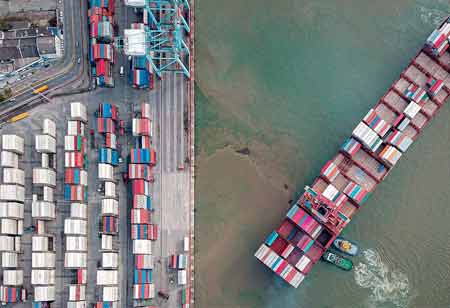THANK YOU FOR SUBSCRIBING
THANK YOU FOR SUBSCRIBING

By
Logistics Transportation Review | Wednesday, October 09, 2024
Stay ahead of the industry with exclusive feature stories on the top companies, expert insights and the latest news delivered straight to your inbox. Subscribe today.
Flatbed trucking is a cost-effective and efficient method for handling large, heavy, and irregularly shaped cargo, allowing businesses to optimize their transportation processes.
FREMONT, CA: Flatbed trucking is a crucial logistics and transportation method for handling large, heavy, and irregularly shaped cargo. Unlike traditional enclosed trailers, flatbed trucks have an open design, making them versatile and efficient for various freight types. Common cargo includes construction materials, machinery, and large equipment, making flatbed trucks ideal for transporting oversized or unusually shaped items. This article explores flatbed trucking, including its advantages, challenges, and best practices.
Advantages of Flatbed Trucking
Flexibility is one of the major advantages of flatbed trucking. The open design of flatbed trailers allows for the transportation of various goods, including those that exceed the dimensions of enclosed trailers. Additionally, flatbed trucks can be loaded and unloaded quickly, reducing downtime and increasing efficiency. This is particularly beneficial in industries where time is critical, such as construction and manufacturing.
Challenges and Considerations
Despite its advantages, flatbed trucking has its own set of challenges. One of the main concerns is the exposure of cargo to the elements. Unlike enclosed trailers, flatbed trucks do not protect cargo from weather conditions, which can be a significant drawback for certain types of freight. To mitigate this, tarps and other protective coverings are often used to shield the cargo.
Another significant challenge is cargo securement. The most critical task in loading cargo on a flatbed trailer is to secure the cargo so that it doesn't shift during transit, which leads to damages or accidents. Cargo securing requires specialized equipment, including chains, straps, and binders and strict safety regulations.
Best Practices for Flatbed Trucking
Several best practices should be followed to ensure safe and efficient flatbed trucking. First, thorough pre-trip inspections are essential to ensure that the trailer and securing equipment are in good condition. Training the drivers correctly on how to load the trucks and security techniques can avoid accidents and ensure safety standards.
Appropriate tarping and cover must be used to protect cargo from weather conditions. Checking the load periodically during transport would also ensure early identification of any problems that could eventually avoid future issues. Lastly, updated knowledge of industry regulations and best practices helps maintain elevated standards of safety and efficiency.
I agree We use cookies on this website to enhance your user experience. By clicking any link on this page you are giving your consent for us to set cookies. More info





